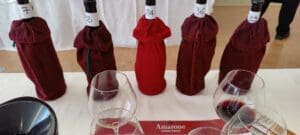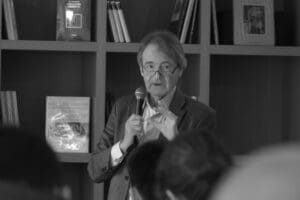Bordeaux, how could any wine lovers not know its name, its place and its fame for its wines. To the world this is terre du vin. But to be what it is today, Bordeaux had seen long period of turmoil, revolutions and rolled many heads. Much has been said about the prices, even more had been drunk, but little about the past has ever been documented.
Jane Anson, British wine writer, educator and journalist spends most of her time in Bordeaux. Beside being a resident of the famed wine region, she is the correspondent for the globally circulating Decanter magazine. In her latest book, Bordeaux Legends, she opened windows to an unseen past of the five famous châteaux. A relatively thick book, about half the size of Jancis Robinson’s Oxford Companion to Wine, it unravels some of the interesting innovation, histories and family ties. So here’s listing a couple…
Wine innovation in the 17th century
Before 17th century, Bordeaux red wines were commonly known by the English as claret (French: clairet) for its light coloured and dark pinkish tone. Today this claret wine style remains as a minority and Bordeaux red wines are much favoured for its dark coloured and full-bodied intensity. Robert Parker won’t be pleased if he lived in Bordeaux 400 years ago.
The pioneer of modern Bordeaux wine style was then owner of Haut Brion, Arnaud III. His method of extended maceration up to ten days instead of a couple was the first step in changing the texture and appearance of claret. Secondly he discovered the “Dutch Candle” sulphur rich properties can sterilise barrels and thus avoid bacterial spoilage. It was common for wines to mature into vinegar then, something unforgivable by current standard.
The 1855 Classification
The 1855 Classification was defined in 1855 – no points given for creativity – under the order of Emperor Napoleon III for the Exposition Universelle in Paris, which is better known as World Exposition. The first World Exposition was held in London (1851), second was New York (1853), and the last to date was held in South Korea (2012).
But the classification was, rather, incomplete. Firstly, for 150 to 200 years before classification, La Tour, Lafite, Margaux and Haut Brion were already the market price makers. Secondly, the Brokers Union board of directors – whom was responsible for the list – was made up of six members and only one was a wine maker. Therefore, the decision was unsurprisingly based on trade sentiments, price histories and not estate potential. The 21st century consumers are still seen making quality assumption based on these factors.
In 1853 Mouton attempted to match Lafite. Now Mouton Rothschild, after the acquisition by Baron Nathaniel de Rothschild, called for a record price of 5,000 franc per tonneau or 900 litres. A bold move that challenged the stature of Lafite as the most premium of Bordeaux. Soon words went around, “perhaps the four Top Growths should now be five.” But it was all too late for Mouton Rothschild.
It remained second to Lafite Rothschild until 1973. As to how Mouton got promoted, that’s another detailed story for you to find out.
In conclusion
Every wine has a story and it would be most upsetting for people to disregard the past. Wide paragraph, pictures rich pages make this an easy reading for the eye. The downside being too bulky to carry around for in-between commute transfer. Nonetheless, if you enjoy a good documentary style, non technical reading about Bordeaux history then this book is for you.
It is available in Shaw Centre Caveau Wines & Bar, call to check.



